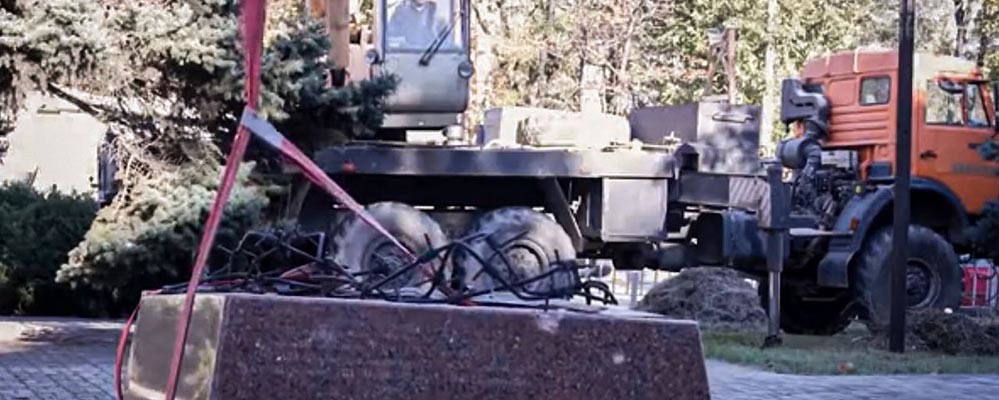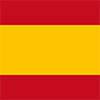Russia removes a monument to the Holodomor, the genocide perpetrated by Stalin in Ukraine
The Putin regime is not only imitating Stalin with its crimes, but is also dedicated to erasing the trace of the atrocities committed by the Soviet dictator.
The genocide committed in Ukraine by the Stalin dictatorship
Between 1932 and 1933, Stalin carried out a genocide against the Ukrainian people, known as Holodomor, through massive grain requisitions that left Ukrainians without a livelihood. The Soviet dictator used hunger as a weapon, killing between 3.9 and 6 million people. This genocide was especially unique since with it Stalin proposed to exterminate the majority of the Ukrainian people, as part of a campaign of Russification of that country that the Soviets had already started in the 1920s, for the purpose of destroying the national spirit of Ukraine, which was not to the liking of the communist internationalism of the Soviet authorities.

This was the Mariupol monument to the victims of the Holodomor
There are 13 memorials to Holodomor victims in Ukraine. The Mariupol memorial was one of them. The monument was unveiled on November 27, 2004, the day after the Day of Remembrance of the Victims of Holodomor and Political Repression in Ukraine. The monument was located next to 56 Universytets'ka Street, very close to the Dramatic Theater destroyed by a Russian attack on March 16. Its construction was an initiative of the historical and educational society "Memorial from Mariupol.
The design was entrusted to architects Yuriy Sagirov and Kostyantyn Okulenko. The square-shaped monument was divided into two parts made up of granite slabs: one red, symbolizing blood, and the other black, symbolizing the earth. An intertwined barbed wire was placed on the red block, and ears of wheat on the black one. Between the two slabs was a crack symbolizing the confrontation between the Soviet government and Ukrainian society. On one side of the black granite slab was an inscription in Ukrainian: "ЖЕРТВАМ ГОЛОДОМОРУ 1932-1933 p.p ТА ПОЛІТИЧНИХ РЕПРЕСІЙ" (To the victims of Holodomor 1932-1933 and political repression). On top of the black slab there was this other inscription in Ukrainian: "НЕ ЗАБУДЕМО ТРАГЕДІЇ МИНУЛОГО, ЩОБ НЕ ПЕРЕЖИТИ ЇХ ЗНОВУ" (We will not forget the tragedies of the past so as not to relive them).

Russian occupiers destroy and remove the monument
According to the Russian state agency RIA Novosti announced today, the authorities installed by the occupants have ordered the removal of the monument. The Russian agency has published a video showing images of its destruction and removal by means of a crane truck. In the video released by RIA Novosti appear several collaborators of the occupiers downplaying the Ukrainian genocide and framing it in the famines that affected the USSR (caused by the communists themselves). One of the people who appears in the video, Yevgenia Krotova, states: "It is not a monument that we are demolishing, but a symbol of political disinformation".

The pro-Soviet historical revisionism that Putin is doing
The destruction of this monument is part of the policy of the Putin government dedicated to preventing criticism of the crimes of the Soviet dictatorship, including those committed by the Stalin regime. Let us remember that United Russia, Putin's party, has criticized the condemnations of the crimes of the communist dictatorships by the Council of Europe and the European Union.
Likewise, Putin has promoted laws that prohibit remembering the alliance of the USSR with Nazi Germany to invade Poland (his government even has presented the Soviet invasion of Poland in 1939 as a "liberation") and any comparison between the crimes of genocide committed by the Nazis and those committed by the Soviets, as I already pointed out here. In this policy of historical revisionism, Putin's regime considers the Ukrainian genocide as a "common tragedy", in an attempt to whitewash the USSR and deny its attempt to liquidate the Ukrainian population through that famine.
---
Photos: Olena Halushka / Anton Shekhovtsov / RIA Novosti.
|
Don't miss the news and content that interest you. Receive the free daily newsletter in your email: Click here to subscribe |
- Most read
- The 'hole' without civil flights around Paris during the opening of the Olympic Games
- Spain vetoes the Russian frigate 'Shtandart', which intended to reach Vigo, in all its ports
- The interior of the Statue of Liberty torch and the sabotage that canceled its visits
- The ten oldest national flags in the world that are still in use today
- The Russian intelligence document that sparked a hoax about French troops
- The BNG boasts of the support of a terrorist group and a dictatorship at a public event
- A virtual tour of ancient Rome in full color, just as it was in its heyday

 ES
ES





Opina sobre esta entrada: